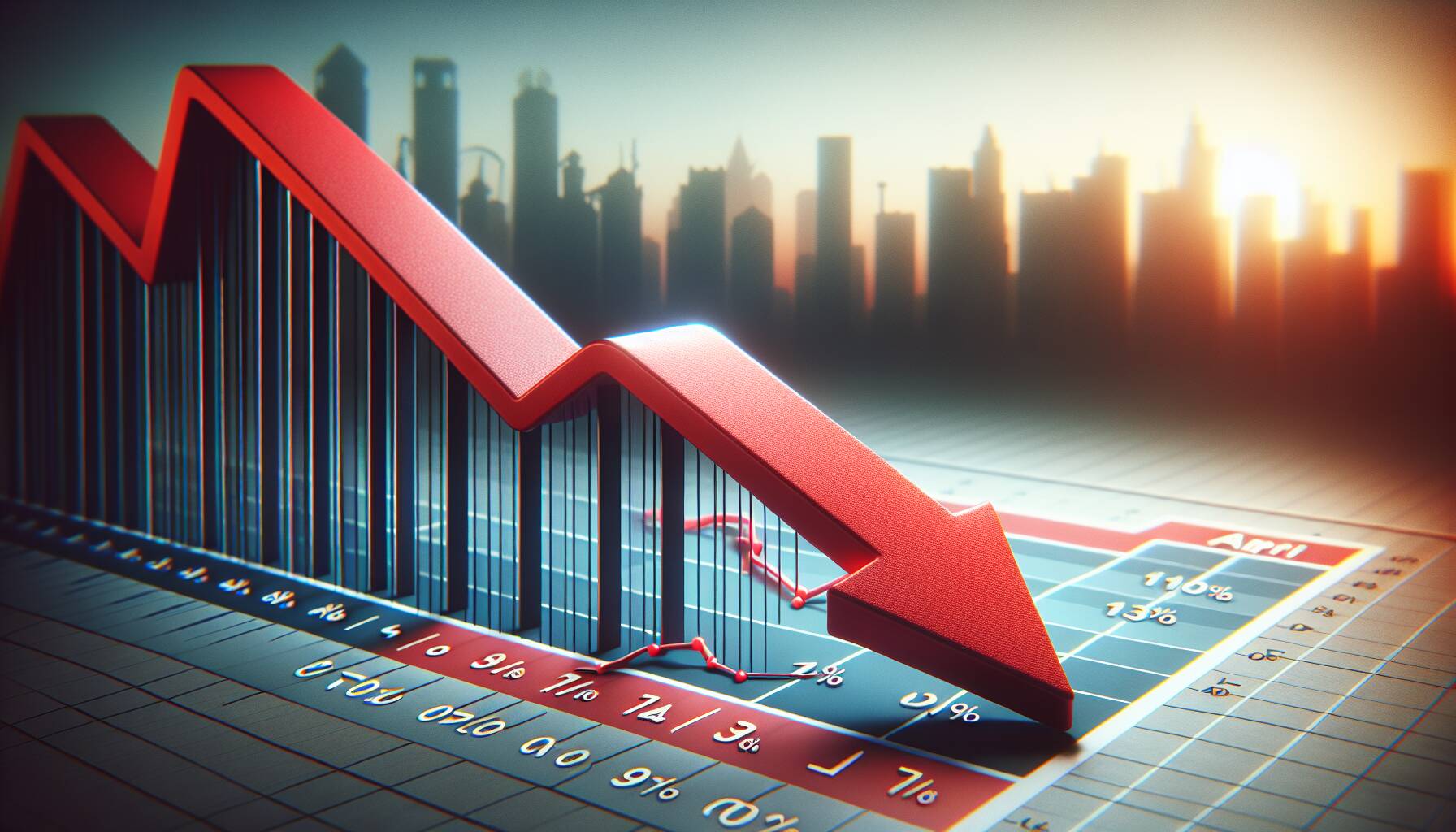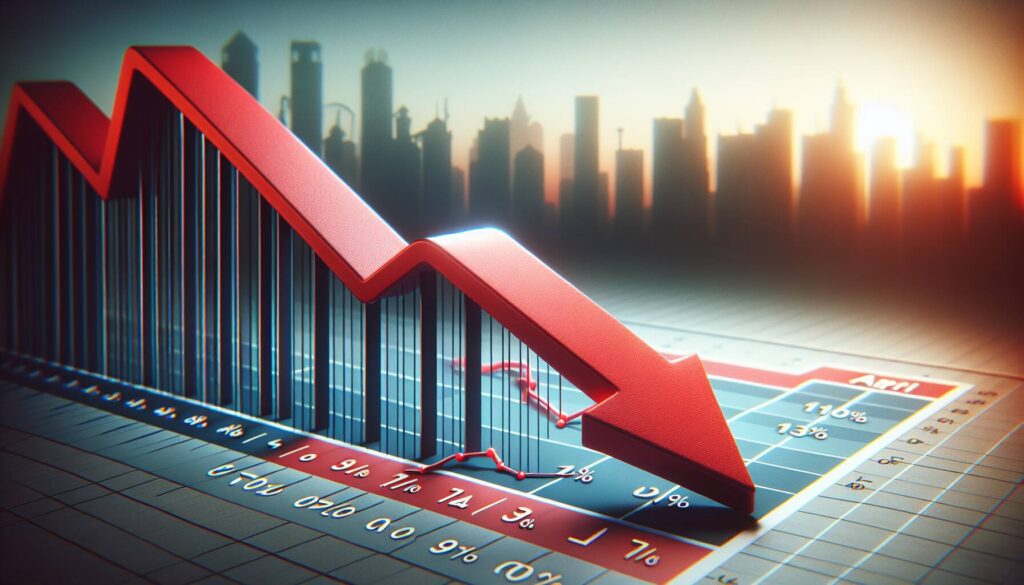In a notable development for both the economy and cryptocurrency markets, the latest figures from the Bureau of Labor Statistics indicate that inflation has shown signs of easing. The headline Consumer Price Index (CPI) for April recorded a rise of 0.2%, which is below the economists’ forecast of 0.3% and marks an increase from the previous month’s slight decline of -0.1%. This year-over-year figure now stands at 2.3%, the lowest it has been since February 2021, reflecting a steady downtrend in inflationary pressures.
On a broader scale, the Core CPI, which excludes volatile food and energy prices, also demonstrated modest growth. It ticked up by 0.2%, a slight increase from March’s 0.1%, though it fell short of the anticipated 0.3%. Year-over-year, Core CPI remains stable at 2.8%, matching the performance observed in March and aligning with current market expectations.
Bitcoin (BTC), responding positively to this fresh economic data, slightly increased its value, trading around $103,800 shortly after the release of the inflation report. This upward movement reflects the cryptocurrency’s continuing sensitivity to macroeconomic indicators.
The repercussions of this inflation data extended into the stock market as well, with U.S. stock index futures initially experiencing small losses before bouncing back to a more positive trajectory. Additionally, the yield on 10-year Treasury bonds dipped to 4.44%, a minimal decrease that can impact investor sentiment across various asset classes.
This latest inflation report is being closely monitored by market participants, as it could signal shifts in monetary policy and broader economic trends that may influence both traditional and digital asset markets in the coming weeks.

Impact of April’s Inflation Data
The recent inflation report for April reveals significant shifts in economic indicators that could influence consumers and investors alike. Here are the key points to consider:
- Year-Over-Year CPI Rate:
- The headline Consumer Price Index (CPI) fell to its slowest pace in over four years.
- CPI rose by 2.3% year-over-year, a slight decrease from the 2.4% forecasted and the 2.4% level in March.
- April CPI Increase:
- The CPI increased by 0.2% in April, which was below the anticipated 0.3% increase.
- This marks an improvement compared to the -0.1% change recorded in March.
- Core CPI Insights:
- Core CPI, excluding food and energy, rose by 0.2%, slightly below the expected 0.3% increase but higher than the 0.1% change in March.
- Year-over-year Core CPI remained steady at 2.8%, consistent with forecasts.
- Market Reactions:
- Bitcoin (BTC) registered modest gains, trading at $103,800 following the release of the inflation data.
- U.S. stock index futures shifted from small losses to slight gains in response to the inflation report.
- The 10-year Treasury yield decreased by one basis point to 4.44%, indicating market adjustments to the inflation news.
The changes in inflation rates can significantly impact the financial decisions of consumers, investors, and policymakers, influencing everything from interest rates to consumer spending habits.
April Inflation Insights: Navigating Economic Shifts
The recent data revealing a decline in annual inflation rates in April is not just a statistic; it represents a pivotal shift in the economic landscape. The year-over-year Consumer Price Index (CPI) has reached its lowest increase in over four years at 2.3%, showcasing a slight easing that could have profound implications for various sectors. When we look at similar news segments, it’s clear that different reactions emerge in the marketplace, highlighting the unique advantages and disadvantages of this scenario.
Competitive Advantages: The reduced inflation rate is likely to foster consumer confidence, as it creates a more favorable environment for spending. Businesses that rely on discretionary purchases, such as retail and hospitality, could see a boost in revenue as consumers feel less pressured by rising prices. Moreover, the slight decrease in forecasted expectations could signal to investors that the Federal Reserve may reconsider its aggressive fiscal tightening strategy, potentially benefiting sectors like real estate and technology that thrive on lower interest rates.
Additionally, the stability reflected in the Core CPI suggests that essential goods remain manageable in price, potentially safeguarding lower-income populations from the brunt of inflationary pressures. This sustained steadiness could support a favorable climate for economic growth, giving investors a reason to be optimistic, as seen by Bitcoin’s modest gains following the news.
Competitive Disadvantages: However, it’s not all sunshine and rainbows. The markets are still skittish about potential future shifts, and sectors closely tied to commodities, such as energy and agriculture, may continue to experience volatility. The slight uptick in core inflation, ticking up to 2.8%, indicates that while overall inflation is easing, underlying price pressures may still pose challenges, particularly for companies heavily reliant on raw materials that could see price fluctuations. This uncertainty could create hurdles for manufacturing and logistics-focused businesses.
The recent data from April could benefit consumers in general, particularly those feeling the weight of inflation burdens in their day-to-day expenses. Conversely, it may create problems for policymakers and market analysts who are striving for clarity in this dynamic economic environment. Stakeholders in the finance and investment sectors will need to remain vigilant, as shifts in inflation can lead to unpredictable market reactions, prompting a more cautious approach in strategic planning.

















